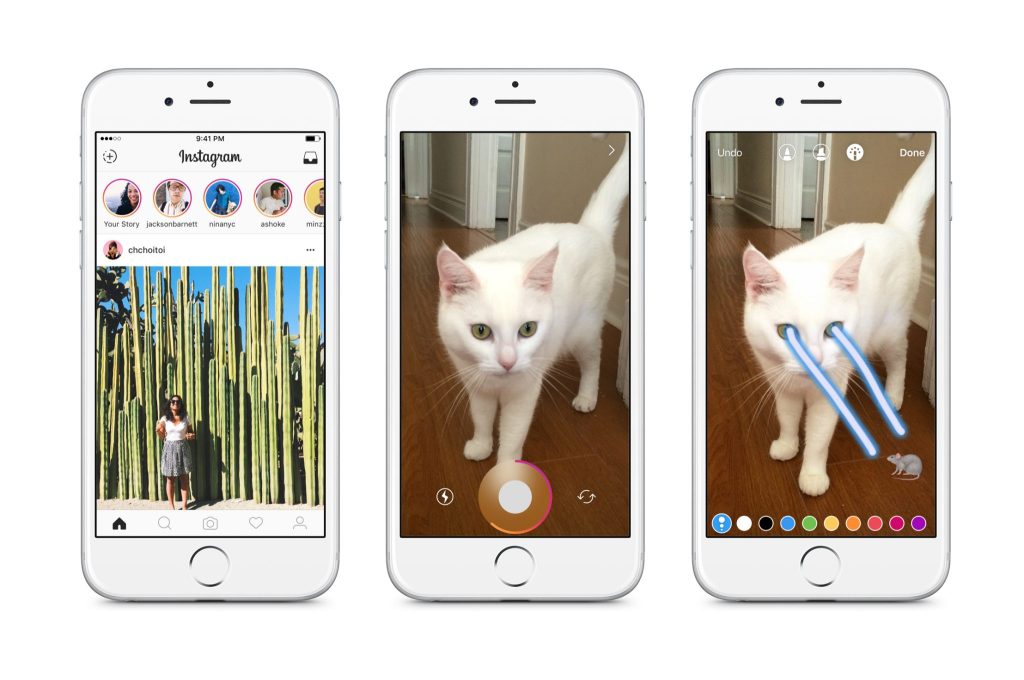Last week saw the bold release of Instagram Stories. Users can now share a string of photos and videos edited with drawings and captions that last for 10 seconds and self-destruct after 24 hours. Sound familiar?
Familiar may not be a strong enough word. Rather, it seems more like blatant plagiarism of Snapchat’s most popular feature, reflected in their brazen choice to even use the same name. Nevertheless, the decision to introduce this new feature in such an unabashed manner seems to be a tactical move from Instagram. They want their users to know they have replicated Snapchat’s popular feature; they want to show their users that they can take the same idea but make it better. As Instagram CEO Kevin Systrom explained in an interview:
“[Snapchat] deserve all the credit… [but] this isn’t about who invented something. This is about a format, and how you take it to a network and put your own spin on it.”
Why has Instagram copied Snapchat?
The simple answer is that Snapchat were on to something and Instagram wanted in. Instagram owner, Facebook, even tried to buy Snapchat for £3bn back in 2013 but Snapchat refused. Facebook couldn’t acquire the popular social platform so the next best option was to copy them. In the process, they will be hoping to widen their user base and increase the advertising success of the platform.Snapchat boasts a huge appeal to younger audiences, who favour the fast-paced and more personal approach to social sharing. In addition, millennials live in an increasingly pressurised digital world where value is, sadly, often measured by likes and comments. The stories feature relieves this pressure, providing a more fun and liberal way of communicating. Furthermore, the recent escalation of video output has meant that the social media platforms have had to adapt accordingly. Instagram stories will facilitate the increased production of videos, making them easier to create and easier to publish.Instagram knows that although the stories function is a highly successful feature, Snapchat has a problem with older users. On the other hand, Instagram are in the ideal position to introduce stories to an older generation, with the advantage of a familiar platform and more user friendly interface. Yet the move is not just about widening the user base and satisfaction; Instagram also wants a slice of the marketing magic. According to a recent study, Snapchat has the ability to command more visual attention than Facebook and Instagram combined, at an impressive 78%:Dev team at #InstagramStories pic.twitter.com/o5nxNArob9
— Bart Lapers (@fotograaf) August 3, 2016
Furthermore, Snapchat video ads generate a higher purchase intent, almost three times higher than that of Instagram. In other words, users are more likely to click-through and make a purchase via a Snapchat ad than they are on Instagram:
This is likely due to the format of Snapchat ads. Not only do they fill the entire screen and therefore minimise distractions, they are also exceptionally brief in nature and can captivate the user’s attention for the full duration of the ad. In adopting this format, Instagram can leverage the success of Snapchat’s ads – marketers, take note.
Although the idea and concept is the same, there are several key differences as noted in the above table. It is clear that Instagram is attempting to adapt the stories feature to suit the picture-sharing platform, notable in the use of an algorithm to determine the display order and the added level of engagement through direct message. Despite there not currently being an option for the same goofy filters much loved by Snapchat users, given that Instagram was the first champion of filters, it is only a matter of time. As for users being able to see who has viewed their stories – well, that will put an end to snooping on your ex!
Are there any differences between Instagram Stories and Snapchat Stories?
| Instagram Stories | Snapchat Stories | |
| Photos | Camera roll photos from the last 24 hours | Photos stored in memories |
| Display Order | Algorithm to determine which stories each user would prefer to see | Chronological order |
| Filters | No filters currently available | Various goofy filters available, including dog face and flower crown |
| User Interface | More user friendly for digital novices and a nice, clean user interface | Not quite as user friendly, geared more at a younger audience |
| Viewers Visibility | Users can see a list of people who have viewed their story | Users cannot see who has viewed their story |
| Engagement | Users can engage with stories by sending a direct message | There is currently no way of engaging with stories |
| Privacy | If your profile is not private then your stories will be public, although there is the option to hide stories from certain people | Only your friends can see your stories |

